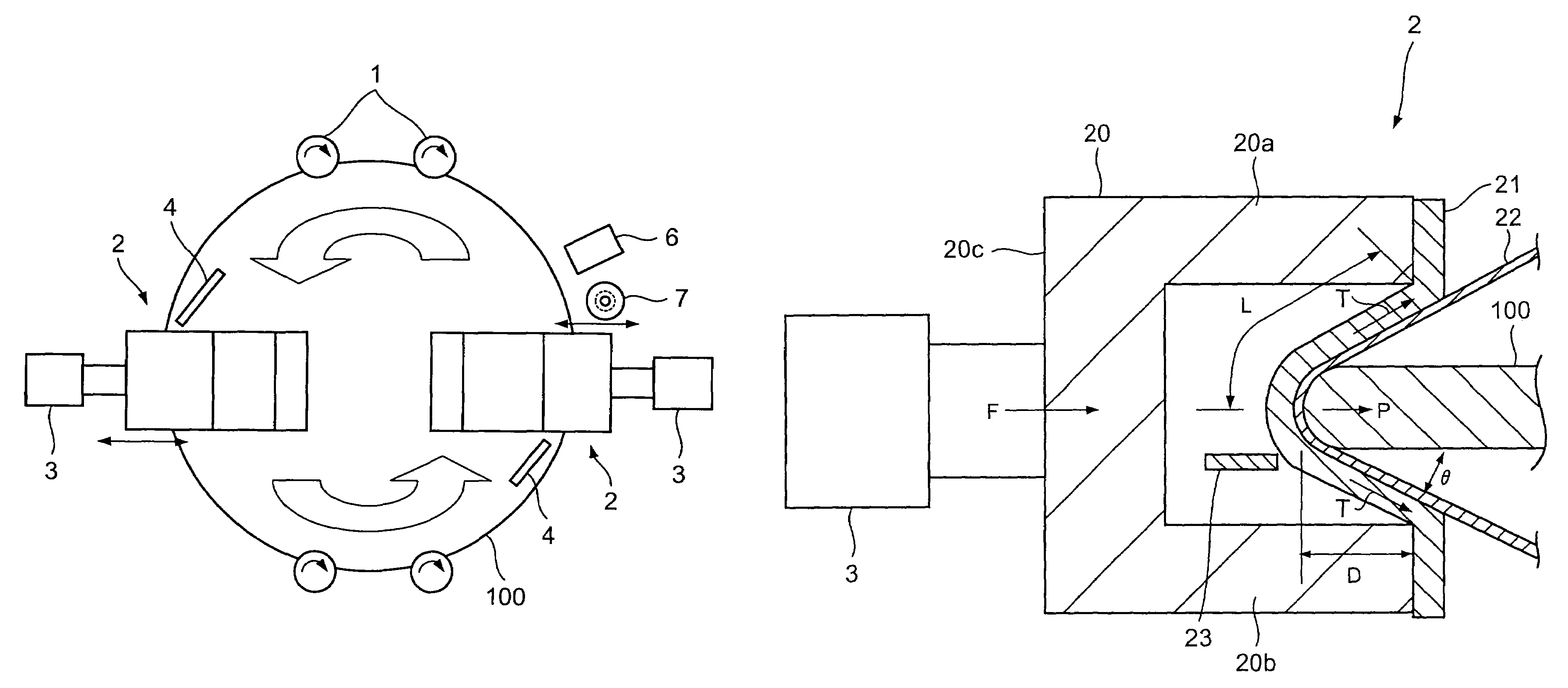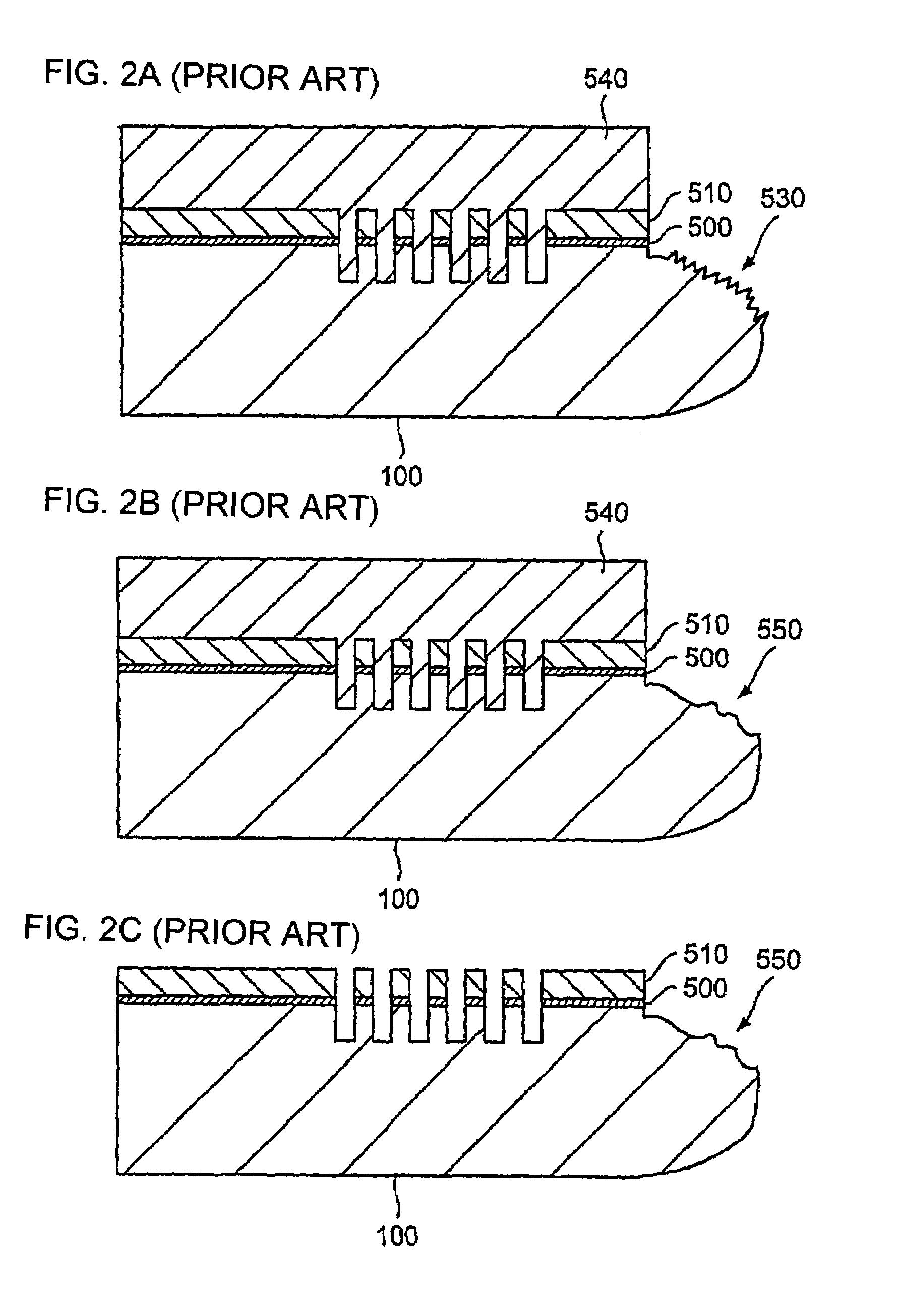Substrate processing apparatus
a processing apparatus and substrate technology, applied in the direction of grinding drives, grinding machine components, manufacturing tools, etc., can solve the problems of b> type of irregularities, > difficult to control, and difficult to remove surface roughness, so as to achieve the effect of removing surface roughness
- Summary
- Abstract
- Description
- Claims
- Application Information
AI Technical Summary
Benefits of technology
Problems solved by technology
Method used
Image
Examples
second embodiment
[0087]Next, a substrate processing apparatus according to the present invention will be described below. A substrate processing apparatus in the present embodiment serves to remove a Ru film attached to a bevel portion, an edge portion, and a reverse face of a semiconductor wafer when a Ru film to be used as a capacitor electrode is deposited on a device-formed surface by a CVD method.
[0088]As shown in FIG. 11, when a Ru film 81 to be used as a lower capacitor electrode is deposited with a thickness of 30 nm on a silicon nitride film 80 deposited on a semiconductor wafer 100 by a batch-type CVD method, the Ru film 81 is deposited not only on a device-formed surface, but also on a bevel portion, an edge portion, and a reverse face with a thickness of about 30 nm. A capacitor using this type of Ru film 81 comprises, for example, a three-dimensional capacitor, and is used for DRAM or FeRAM. As described above, it is necessary to remove the Ru film 81 attached to the bevel portion, the ...
first embodiment
[0089]Therefore, the Ru film attached to the bevel portion, the edge portion, and the reverse face of the semiconductor wafer is removed with use of the substrate processing apparatus of the present embodiment. The substrate processing apparatus in the present embodiment comprises, in addition to a (first) polishing unit described in the first embodiment, a second polishing unit for removing a Ru film 81 attached to a reverse face of a wafer 100. FIG. 12 is a schematic plan view showing the second polishing unit in the present embodiment, and FIG. 13 is a front cross-sectional view of FIG. 12.
[0090]A shown in FIGS. 12 and 13, the second polishing unit comprises a plurality of rollers 11 for rotatably holding a wafer 100, a polishing roll (polishing head) 12 having a polishing film 12b wound on an elastic body 12a, a chemical liquid supply nozzle 13 (not shown in FIG. 13) in the form of a shower nozzle, a support roll 14 made of PVA sponge, and cleaning liquid supply nozzles 15 (not ...
third embodiment
[0106]Next, a substrate processing apparatus according to the present invention will be described below. FIG. 15 is a schematic view showing a polishing head in a substrate processing apparatus according to the present embodiment. As shown in FIG. 15, the polishing head 102 in the present embodiment comprises a support portion 120 having two projecting portions 120a, 120b, and a fluid bag 122 into which a fluid is supplied through a fluid passage 121. The fluid bag 122 is formed of a material having a flexibility, such as thin rubber or soft vinyl, so that it can be deformed in accordance with an internal pressure thereof The fluid passage 121 is connected to a fluid supply source 123, and a fluid such as a gas (air or the like) or a liquid (water or the like) is supplied from the fluid supply source 123 to the fluid bag 122. The fluid supply source 123 can supply a fluid under a desired pressure to the fluid bag 122, and the internal pressure of the fluid bag 122 is adjusted by the...
PUM
 Login to View More
Login to View More Abstract
Description
Claims
Application Information
 Login to View More
Login to View More - R&D
- Intellectual Property
- Life Sciences
- Materials
- Tech Scout
- Unparalleled Data Quality
- Higher Quality Content
- 60% Fewer Hallucinations
Browse by: Latest US Patents, China's latest patents, Technical Efficacy Thesaurus, Application Domain, Technology Topic, Popular Technical Reports.
© 2025 PatSnap. All rights reserved.Legal|Privacy policy|Modern Slavery Act Transparency Statement|Sitemap|About US| Contact US: help@patsnap.com



